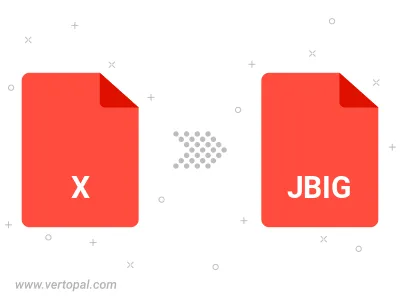Convert X AVS to JBIG
Convert X AVS images to JBIG format, edit and optimize images online and free.

The X file extension, also known as Application Visualization System X Image, is used for storing high-quality, true-color images with transparency. Developed by Stardent Computer for UNIX systems, it supports 32 bits per pixel, allowing for over 16,7 million colors with an alpha channel for transparency. This format is particularly valuable in scientific visualization and complex data representation. Despite newer formats, its uncompressed nature ensures image integrity without compression-related degradation.
The JBIG (Joint Bi-level Image Group) file extension, standardized as ISO/IEC 11544 and ITU-T T.82 in 1993, is a lossless image compression format primarily used for binary images, such as those in fax transmissions. Developed by the Joint Bi-level Image Experts Group, JBIG offers significant compression efficiency over previous standards, achieving up to 50% better compression than Fax Group 4. Its history dates back to 1988 when ISO and CCITT collaborated to create a unified standard for bi-level image coding.
Choose any X AVS image from your computer, or drag & drop a X AVS file onto this page.
Use the tools available for converting X AVS to JBIG and click the Convert button.
Give it a moment for the JBIG conversion to complete, then download your file afterward.

To change X AVS format to JBIG, upload your X AVS file to proceed to the preview page. Use any available tools if you want to edit and manipulate your X AVS file. Click on the convert button and wait for the convert to complete. Download the converted JBIG file afterward.
Follow steps below if you have installed Vertopal CLI on your macOS system.
cd to X AVS file location or include path to your input file.Follow steps below if you have installed Vertopal CLI on your Windows system.
cd to X AVS file location or include path to your input file.Follow steps below if you have installed Vertopal CLI on your Linux system.
cd to X AVS file location or include path to your input file.